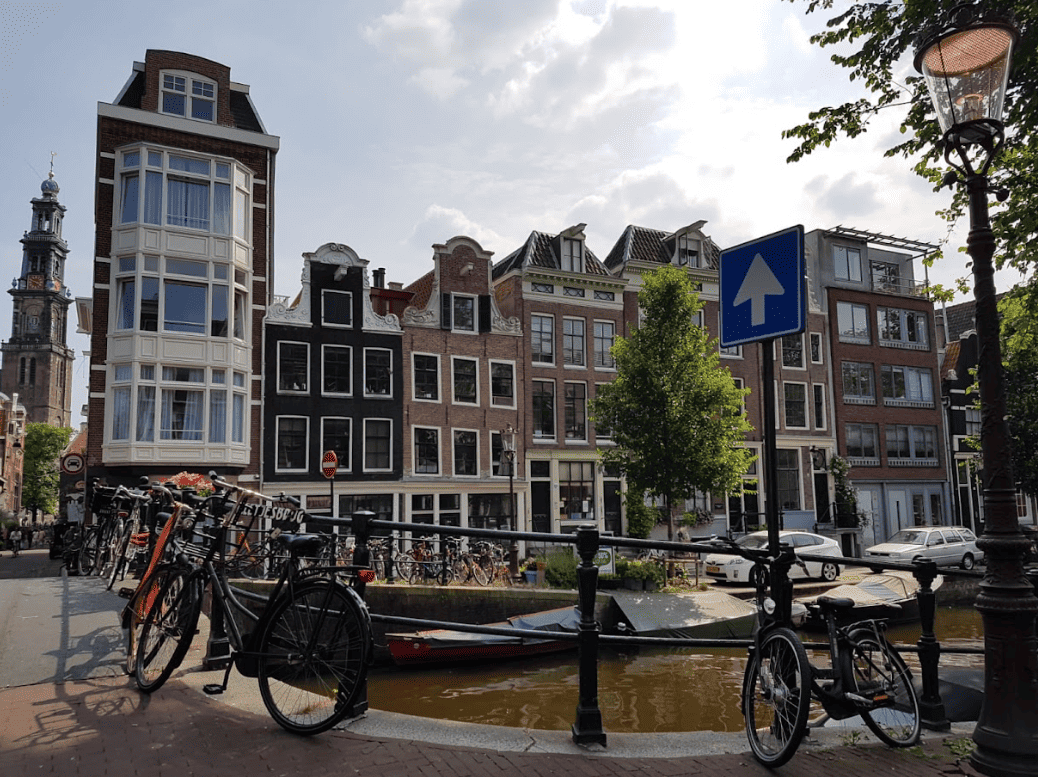In the heart of the Netherlands, a city renowned for its intricate canal system and stunning architecture offers more than meets the eye. Amsterdam, a hub of cultural and historical significance, presents a unique food culture waiting to be explored. Among the various ways to delve into this flavorful world, Amsterdam Food Tours emerge as an enlightening path to understanding the city’s relationship with food. As these tours wind through the storied streets, they reveal the layers of history and tradition that have shaped Dutch cuisine.
In this city, each dish offers an insight into the blend of history and modernity that characterizes Amsterdam. Moving beyond the active marketplaces and serene backstreets, the food scene here presents a diverse mix of culinary influences, reflecting the city’s dynamic character. Engaging in Amsterdam Food Tours offers more than just the pleasure of great food; it’s about immersively exploring the intricate link between the city’s past and its culinary present.
Amsterdam’s Culinary Context
Amsterdam’s culinary is deeply intertwined with its cultural and historical context. As a city renowned for its artistic heritage and openness to new ideas, this spirit is reflected in its diverse and evolving food scene. The history of Amsterdam as a prominent trading center has brought a variety of culinary influences to its streets, blending traditional Dutch flavors with international fare.
The city’s food culture is a direct reflection of its multicultural population. From Indonesian rijsttafel, a relic of the Dutch colonial era in Indonesia, to Surinamese broodjes, showcasing the influence of Suriname, a former Dutch colony in South America, Amsterdam’s culinary landscape is rich in history and diversity. These dishes, along with others like Turkish and Moroccan cuisines, have found a welcoming home in Amsterdam, adding to the city’s eclectic gastronomic profile.
Furthermore, Amsterdam’s traditional Dutch cuisine offers a window into its past. Classic dishes such as haring (pickled herring), often enjoyed with onions and pickles, and bitterballen, deep-fried meatballs, are staples in the local diet. These dishes, along with stamppot, a comforting mix of mashed potatoes and vegetables, usually accompanied by sausage, tell a story of the city’s culinary journey through time.
Cheese also plays a significant role in Amsterdam’s food history. The Netherlands is famous for its cheese, with varieties like Gouda and Edam being globally recognized. The Amsterdam food markets are a testament to this, where one can sample a wide array of Dutch cheeses, each representing a part of the country.
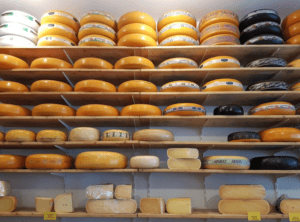
How to Plan your Food Tour
The essence of a food tour lies not just in the sampling of local delicacies, but in the immersive exploration it offers into a city or region’s gastronomy. This exploration is a blend of flavors, food culture, and history, providing an authentic and memorable experience for both tourists and locals. In recent years, the trend of culinary tourism has grown significantly, with food tours becoming a critical element of the travel experience. They not only introduce tourists to local flavors but also play a substantial role in supporting the local economy by promoting local restaurants, markets, and food producers.
When crafting a food tour itinerary, several factors are crucial. The selection of restaurants and food vendors is vital; these establishments should offer exceptional local cuisines and possess a unique story or cultural significance. This not only ensures an authentic culinary experience but also engages you in the local food scene.
Another essential aspect of food tours is the role of the tour guides. Knowledgeable and passionate guides can transform a simple meal into an educational and entertaining journey, leaving participants with a deeper appreciation for the culinary landscape. They are crucial in delivering a memorable food tour experience, as they provide insights into the food, share captivating stories, and impart local history and cultural knowledge.
Lastly, understanding the role of cuisine in tourism is key. Food constitutes a significant portion of a traveler’s expenses and is an essential part of the travel experience. By investing time in enjoying local cuisine, travelers can enhance the overall quality and satisfaction of their trip. Trying local food allows travelers to experience new flavors and ingredients, understand a region’s history and traditions, and connect with locals and their way of life.
3 Dishes You Can’t Miss When Visiting Amsterdam
Amsterdam’s culinary scene offers a diverse palette of flavors, and among the must-try dishes, there are three that particularly stand out: Poffertjes, Herring and Kibbeling, and Dutch Stamppot.
Poffertjes
Poffertjes are a delightful treat, known as Dutch mini pancakes, dating back to the 17th century. The exact origins of poffertjes are somewhat elusive, but they are believed to have been introduced by French Huguenots seeking refuge in the Netherlands or created by Dutch bakers using leftover batter. Traditionally, these tiny, fluffy pancakes were served during special occasions like weddings, fairs, and carnivals. Now, they are a popular street food, found in markets and cafes throughout the country.
The classic recipe for poffertjes includes a mix of flour, eggs, yeast, milk, and salt. The batter is poured into a special cast-iron pan with small, shallow cavities, cooked until golden brown, and traditionally served with a dollop of butter and a sprinkle of powdered sugar. Over time, there have been many variations, with some bakers adding different flavors to the batter like vanilla or cinnamon and experimenting with various toppings, including Nutella, caramel sauce, or ice cream.

Herring and Kibbeling
Herring is a significant part of Dutch cuisine, often served pickled with onions and pickles. This fish has a rich history in the Netherlands, reflecting the country’s maritime heritage. Kibbeling, another local favorite, consists of battered chunks of fish, often served with a mayonnaise-based sauce. It is a testament to the Dutch tradition of fishing and enjoying the fresh bounty of the sea. These fish delicacies offer a taste of the Netherlands’ connection to its waters and are a must-try for seafood lovers.
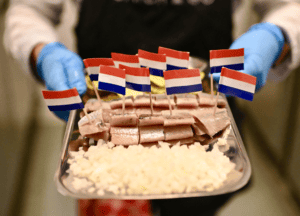
Dutch Stamppot
Stamppot is a hearty Dutch dish, a symbol of comfort food in the Netherlands. It’s a combination of mashed potatoes mixed with different vegetables, often served with a side of sausage. This dish represents the simplicity and heartiness of traditional Dutch cuisine. It’s a warming, filling meal that is particularly popular in the colder months and provides insight into the Netherlands’ agricultural roots and its reliance on robust, nourishing fare.
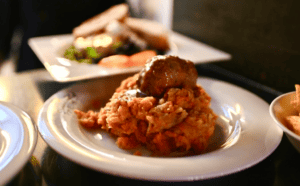
Beyond the Food – Amsterdam’s Appeal
Amsterdam, with its wonderful culture and history, extends far beyond its culinary delights. This vibrant city offers a multitude of attractions that make it a must-visit destination.
The city is a treasure trove of historical and cultural landmarks. The city presents the Rijksmuseum, home to masterpieces from the Dutch Golden Age, and the Van Gogh Museum, offering an intimate look into the life and work of the legendary artist Vincent van Gogh. Another poignant landmark is the Anne Frank House, which connects visitors with Amsterdam’s wartime history, offering a deeply moving experience. For contemporary art enthusiasts, the Stedelijk Museum in Museum Square showcases modern artworks, reflecting the city’s artistic evolution.
The picturesque Jordaan neighborhood, with its narrow streets, historic buildings, and serene canals, is a perfect example of Amsterdam’s charm. Once a working-class district, it’s now filled with art studios, quirky boutiques, and cozy cafes. The Red Light District, known for its illuminated windows and vibrant nightlife, is a unique part of Amsterdam’s history, offering a glimpse into the city’s liberal ethos.
Amsterdam’s intricate network of canals is not only a significant tourist attraction but also a way to explore the city’s maritime legacy. Canal cruises provide an opportunity to see historic houses, charming bridges, and vibrant waterfronts from a new perspective. Vondelpark, the city’s most celebrated public park, is a green oasis perfect for relaxation and leisure activities, especially during the summer months when it hosts open-air concerts.
Amsterdam’s architectural heritage is well-represented by structures like The Oude Kerk (Old Church), the city’s oldest building. This Gothic structure, dating back to the 13th century, showcases high vaulted ceilings, exquisite stained glass windows, and intricate woodwork, narrating tales of the city’s religious and cultural evolution.
For those with extra time, a day trip from Amsterdam can lead to picturesque cities like Haarlem, beautiful beaches like Bloemendaal aan Zee and Zandvoort aan Zee, and the photogenic windmills at Zaanse Schans. These surrounding areas offer a glimpse into the Dutch countryside, history, and culture.
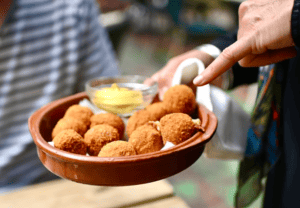
If you’re yearning to dive into this unique blend of culture and cuisine, the Amsterdam Food Tours provide an expertly curated journey. Guided by locals who know the city inside and out, these tours are a passage to the heart and soul of Amsterdam.
Experience Amsterdam unworried, with every detail taken care of, and every taste catered to. Whether you are a seasoned traveler or a first-time visitor, join us on this culinary adventure. Book your tour, immerse yourself in Amsterdam’s food scene, and leave with memories that will linger long after your journey ends.
